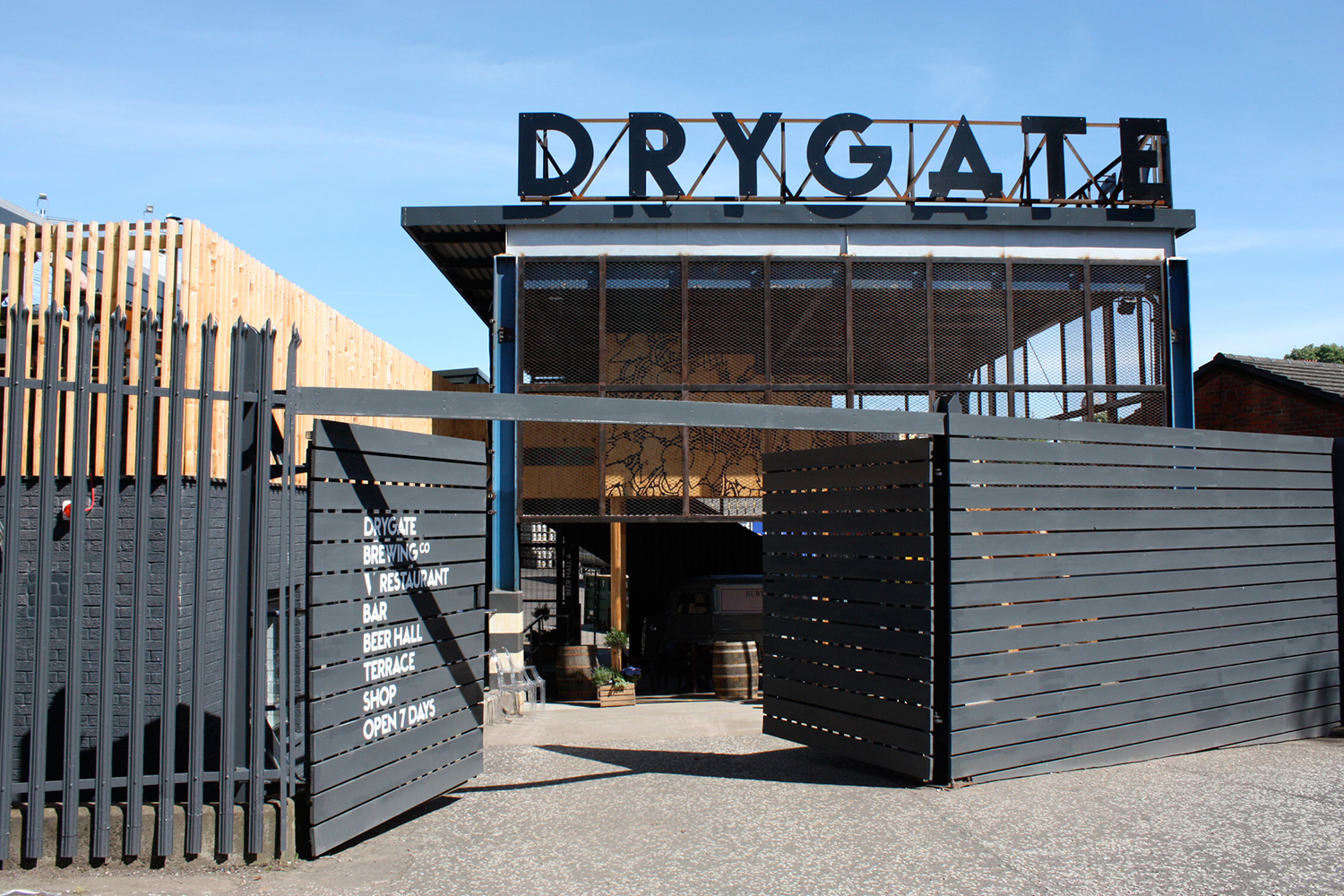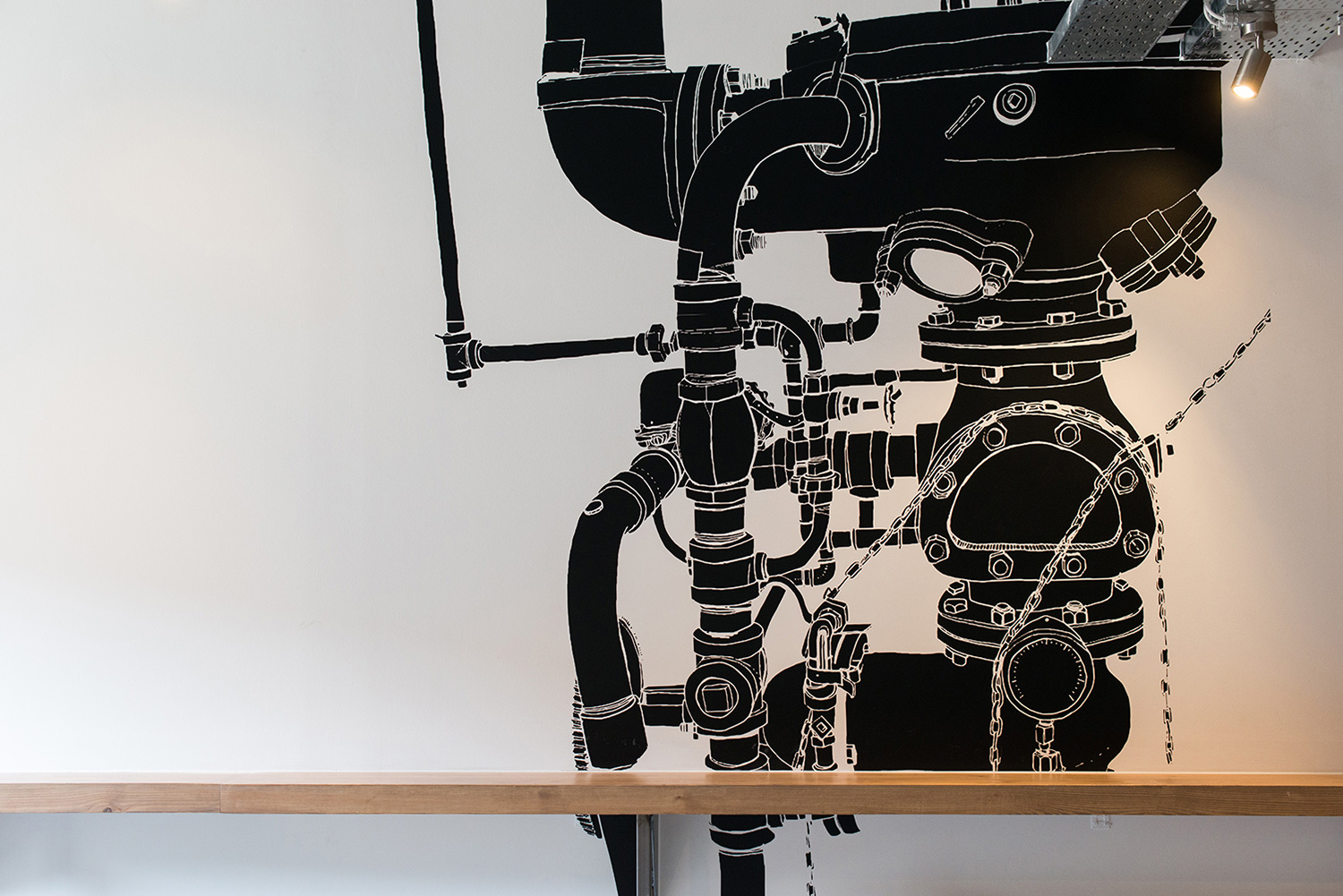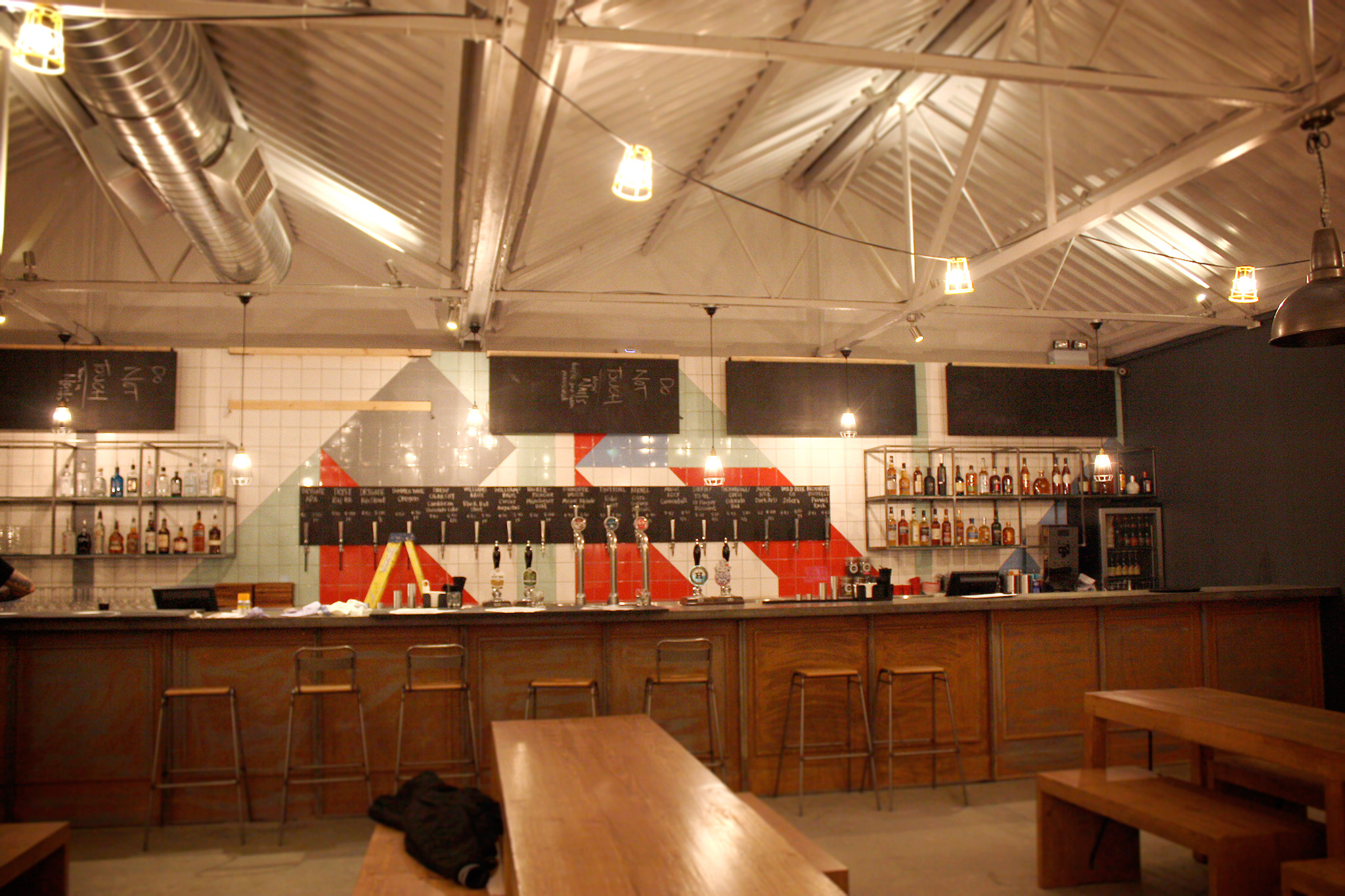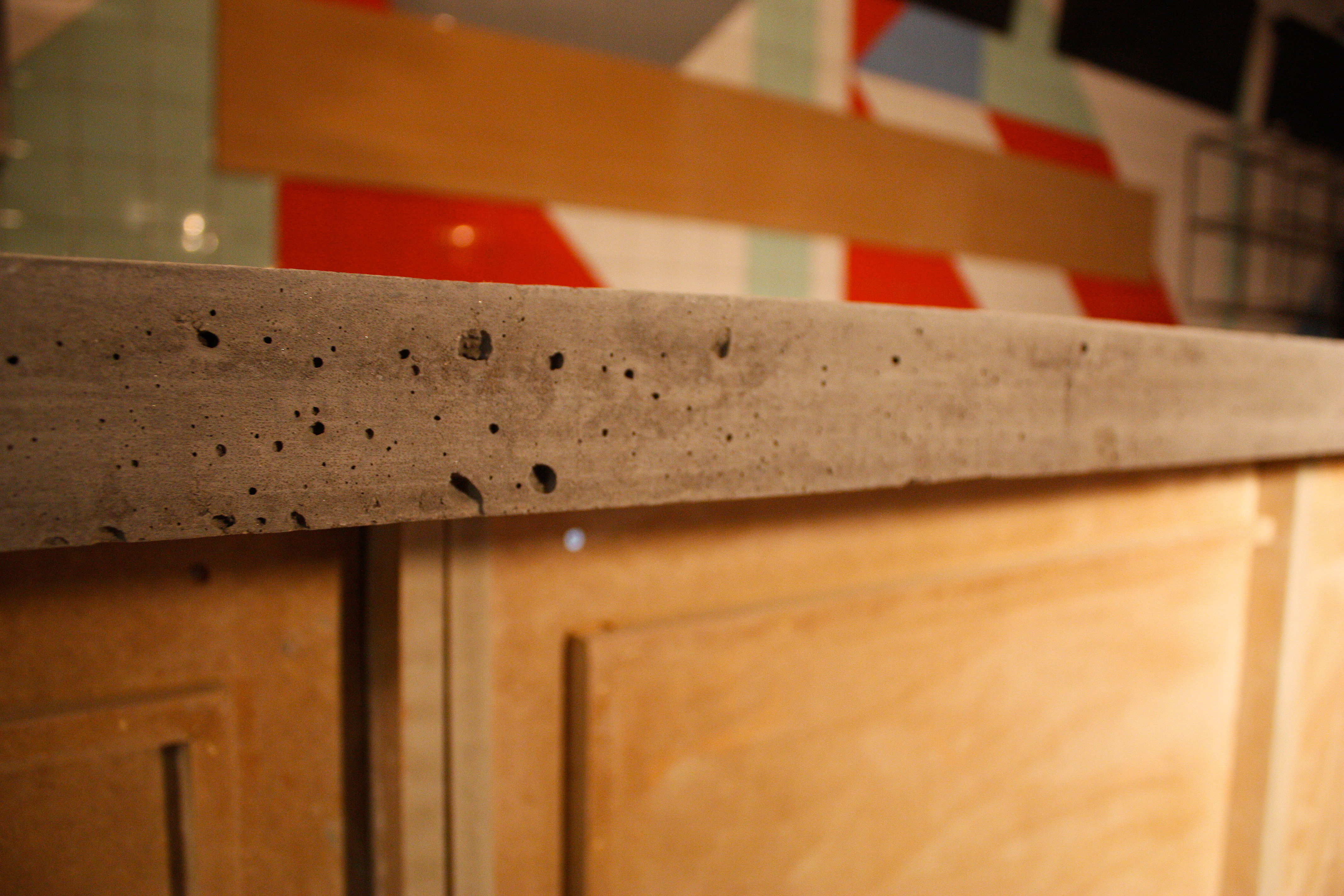Drygate Brewing Co. is Glasgow’s first ‘experiential’ craft brewery. Built on an annexed corner of the Tennent’s Wellpark Brewery site, taking its starting point from one of their oldest remaining buildings, Drygate is a collaboration between Williams Bros. Brewing Co., The Vintage restaurant from Leith, and Graven as interior designers. D8 created the visual identity. Drygate provides a 24 hectolitre craft brewery with state-of-the-art equipment, a small ‘Studio Kit’ brewery space where local enthusiasts can brew their own beers with input from the Drygate experts, a full-service restaurant, events space, and sun terrace. The Drygate Brewing Co. sits on the oldest brewing site in Glasgow, dating back to 1556 and having been in constant use since.
Graven’s design concentrates on existing eccentricities of the building, bearing traces of all its previous incarnations (box factory, print works, bottling plant, storage, etc) and the unique setting. The building sits between three high urban reference points – the Drygate tower blocks, Glasgow’s famous Necropolis, and the towers of Tennent’s industrial-scale brewery. Painting out the building’s cladding reduced its archetypical ‘factory’ shape to an iconic shadow, or outline. This and the prominence of new canopy level signage establishes the brewery as a fourth urban landmark for the area.
Starting with a blank stripped space, materials focused on interplay between inherited fragments of the building’s previous lives and refined use of an industrial but warm palette. The old tiled façade welcomes you at the entrance, and a staircase uncovered during renovation became a central exposed feature of the scheme. Graven paired hard surfaces against warmth: mild steel, cast concrete and polished patinated copper form the bar, hardwood herringbone flooring butts up against a crittall screen dividing the bar from the working brewery, and flat portions of vibrantly coloured resin and paint play off against metal mesh and blackened steel.
The image of the seven peaks of the building runs through all the bespoke furniture and materiality as a detail theme – always integral not applied – from clear zig-zag embroidery in the bespoke sofas to subtler elements like angled table braces and diamond-mesh dividing steel. A mesh clad, closely proportioned off license creates a wall of product as a backdrop to the restaurant even when closed and acts as a menu of the huge number of beers on offer. The participatory nature of Drygate’s business comes to the fore through an entire glazed wall into the large brewery space, acting as a view on the real purpose of this working building and as a down-to-earth noticeboard for the brewers and the restaurant staff to flag up specials, new ingredients, etc.
The upper level at Drygate houses a larger bar and function space, and can be accessed directly from outside via a staircase and sun terrace. Recognising what was exciting about the pre-existing features of the building, Graven’s design revolves around careful interventions rather than complete reinventions – from restoring the original roof and its iconic peaks down to preserving paint marks on the concrete floor, celebrating traces of the building’s functional heritage. Against this backdrop, the aesthetic of interventions is playful and low-tech. Details have been cleverly improvised – the bar, for instance, is clad in timber shuttering which was originally used to form the precise concrete panels cladding the ground floor’s restaurant bar.
Photography: © Renzo Mazzolini Photography www.renzomazzolini.com















